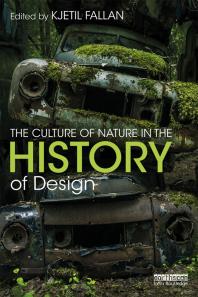
As a botanist, Robin Wall Kimmerer has been trained to ask questions of nature with the tools of science. As a member of the Citizen Potawatomi Nation, she embraces the notion that plants and animals are our oldest teachers. In Braiding Sweetgrass, Kimmerer brings these two lenses of knowledge together to take us on “a journey that is every bit as mythic as it is scientific, as sacred as it is historical, as clever as it is wise” (Elizabeth Gilbert).
Some of the most polluted places on earth are where we spend 90% of our time: inside our homes. Science is continually uncovering more effective ways of improving the quality of our environment, and plants--specifically indoor trees and shrubs--are at the top of this list. Growing Trees and Shrubs Indoors is a definitive guide on what makes these plants special and all the tips and tricks you need to help them survive and flourish in an indoor environment.
Why Look at Plants? proposes a thought-provoking and fascinating look into the emerging cultural politics of plant-presence in contemporary art. Through the original contributions of artists, scholars, and curators who have creatively engaged with the ultimate otherness of plants in their work, this volume maps and problematizes new intra-active, agential interconnectedness involving human-non-human biosystems central to artistic and philosophical discourses of the Anthropocene.
This anthology celebrates the Earth's generous crust, bringing together essays by award-winning scientists, authors, artists, and dirt lovers to tell dirt's exuberant tales. A literary homage to dirt and its significance in our lives, this book will interest hikers, gardeners, teachers, urbanites, farmers, environmentalists, ecologists, and others intrigued by our planet's alluring skin.
This easy-to-use book helps you acquire a wealth of fascinating information about plants, featuring 130 pages of beautiful illustrations composed of scientifically accurate line drawings with the true sizes of the plants indicated. Botany Illustrated, Second Edition, has three sections: An Introduction to Plants gives you facts on everything from cells to seeds; The Major Groups section is from fungi to algae, ferns, conifers, and flowering plant; In Flowering Plant Families are magnolias to asters, and water-plantains to orchids, with the families of major interest included.

This book confronts the dilemma caused by design's pertinent yet precarious position in environmental discourse through interdisciplinary conversations about the design of nature and the nature of design. Demonstrating that the deep entanglements of design and nature have a deeper and broader history than contemporary discourse on sustainable design and ecological design might imply, this book presents case studies ranging from the eighteenth to the twenty-first century and from Singapore to Mexico. It gathers scholarship on a broad range of fields/practices, from urban planning, landscape architecture, and architecture, to engineering design, industrial design, furniture design, and graphic design.
This book offers a comprehensive introduction to the planning and implementation of this special kind of garden, taking the concrete planning process as its guide. From design fundamentals and concept development with different typology variants all the way to the choice of materials, the various construction principles, and building services, all subjects relevant to planning are comprehensively presented.
Often growing far above the ground, "air plants" (or epiphytes) defy many of our common perceptions about plants. The majority use their roots only for attachment in the crowns of larger, usually woody plants--or to objects such as rocks and buildings--and derive moisture and nutrients from the atmosphere and by collecting falling debris. In Air Plants, David H. Benzing takes a reader on a tour of the many taxonomic groups to which the epiphytes belong and explains in nontechnical language the anatomical and physiological adaptations that allow these plants to conserve water, thrive without the benefit of soil, and engage in unusual relationships with animals such as frogs and ants.
Plant production in hydroponics and soilless culture is rapidly expanding throughout the world, raising a great interest in the scientific community. Authors cover both theoretical and practical aspects of hydroponics (growing plants without the use of soil). This reference book covers the state-of-the-art in this area, while offering a clear view of supplying plants with nutrients other than soil.
The village green is the focal point of any community, a gathering place where the best ideas take root and the brightest voices are heard. The New Village Green gathers some of the best ideas and brightest voices of the green community, some famous and familiar, others fresh and unknown.
The challenges facing today's plant breeders have never been more overwhelming, yet the prospects to contribute significantly to global food security and farmers' quality of life have never been more exciting and fulfilling.
Besides exploring the relationship between poetic and scientific responses to the green world within the context of humanity's changing concepts of its own place in the ecosphere, Molly Mahood considers the part that flowering plants played in the daily lives and therefore in the literary work of a number of writers who could all be called poet-botanists: Erasmus Darwin, George Crabbe, John Clare, John Ruskin and D. H. Lawrence.